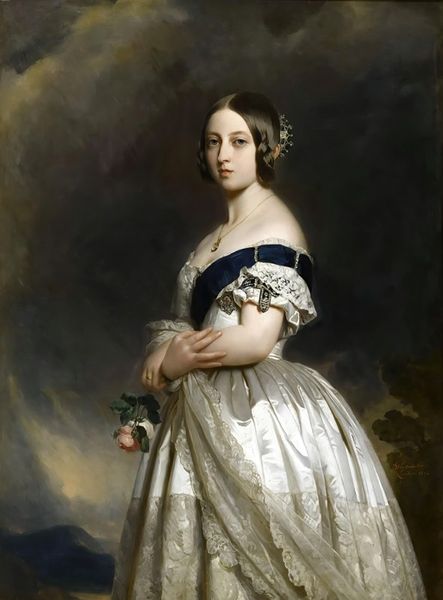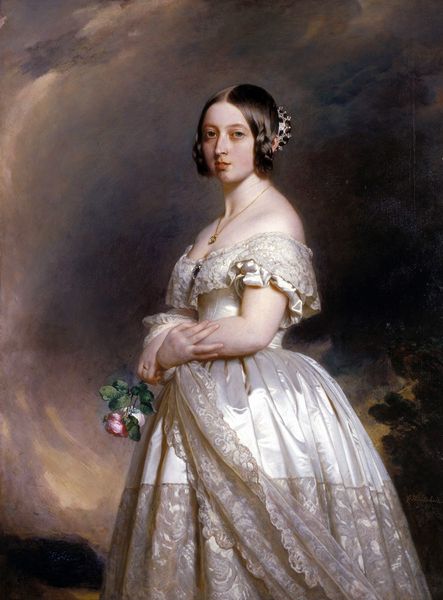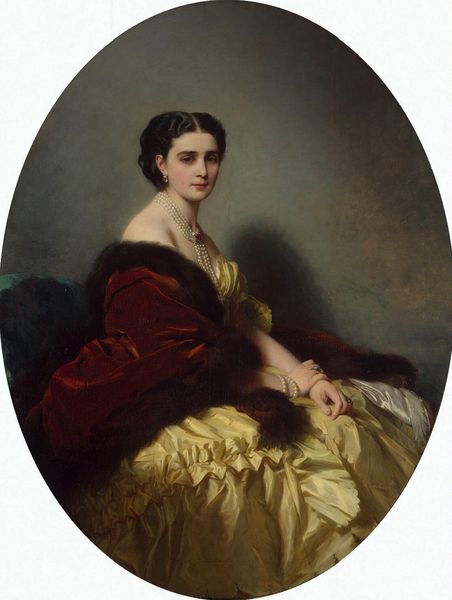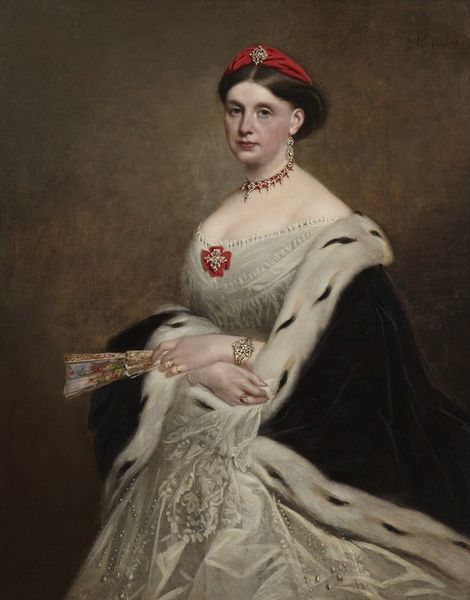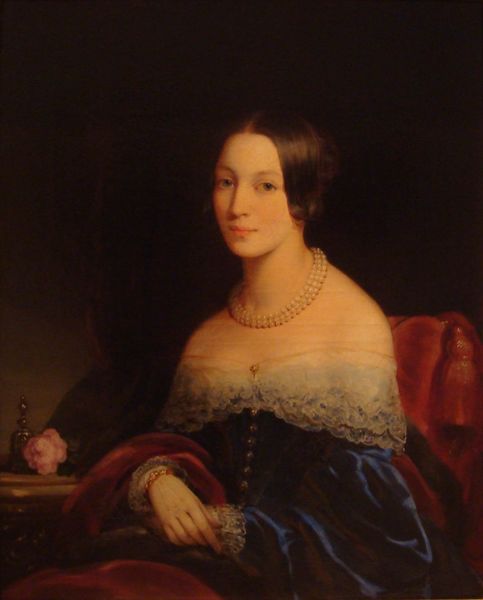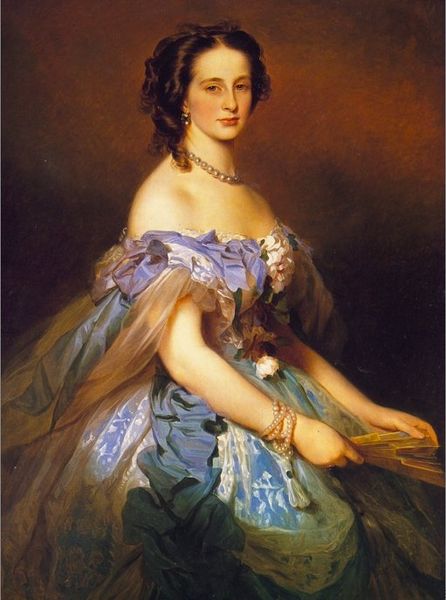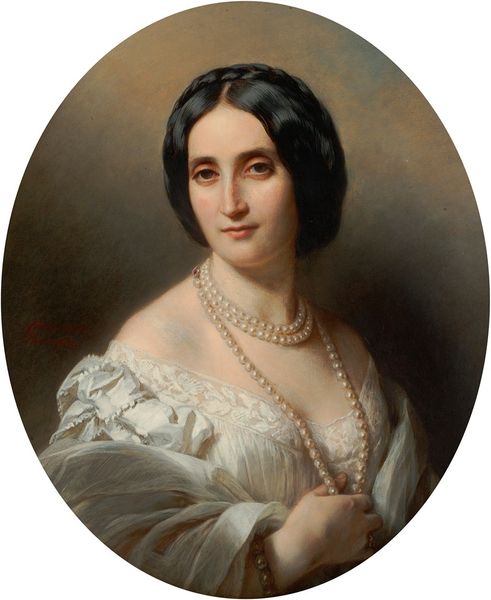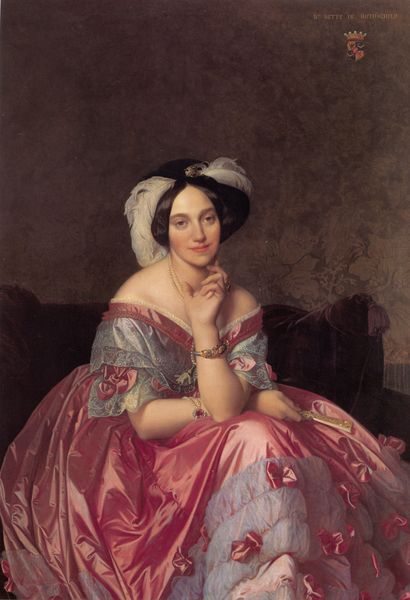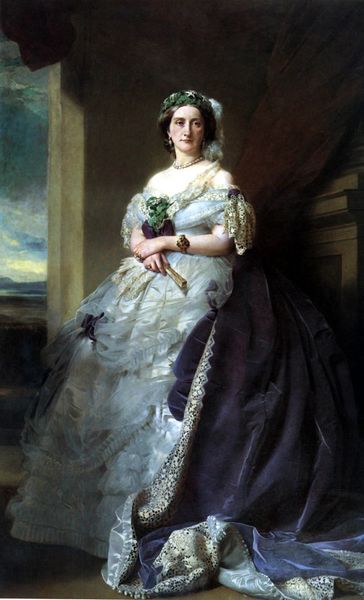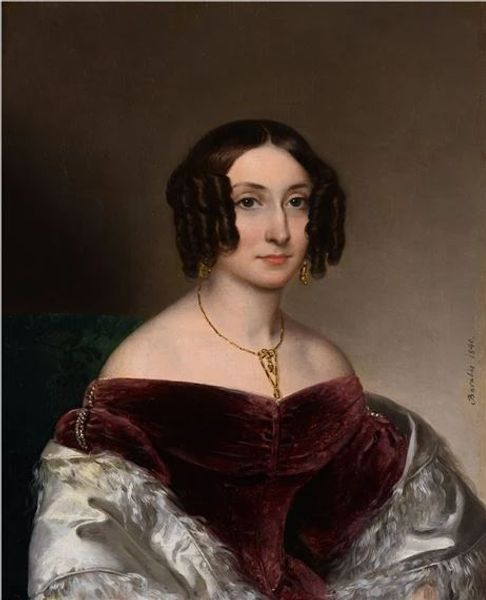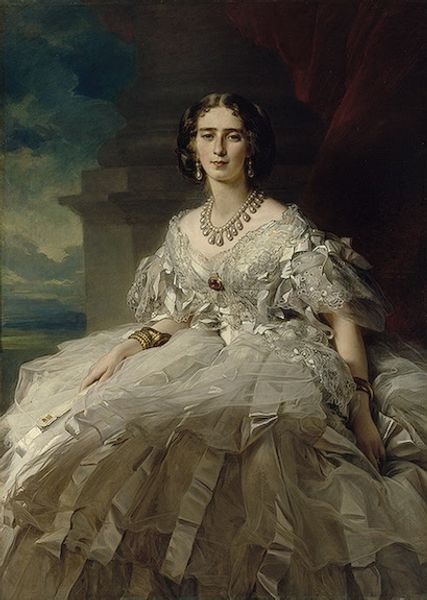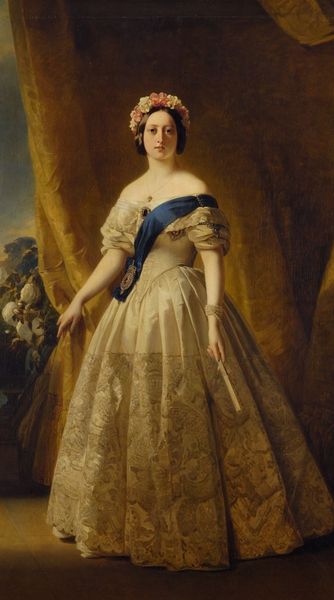
Dimensions: 98 x 130 cm
Copyright: Public domain
Editor: This is Franz Xaver Winterhalter's "Portrait of a Lady," painted in 1860 with oil paints. I find the darkness of her dress, juxtaposed with the pearls, very striking. How do you interpret this work? Curator: It’s tempting to simply view this as an aesthetic rendering of aristocratic beauty. However, let’s consider the societal constraints placed upon women during the mid-19th century. Do you see a quiet defiance in her gaze, a subtle commentary on her restricted role? Editor: Defiance? I hadn't really considered that. The pose seems rather conventional, doesn’t it? Curator: Exactly! That tension is precisely the point. Winterhalter, known for painting royalty, was adept at conveying messages through subtle cues. The somber black dress, fashionable yet restrictive, combined with the delicate fan - is she subtly shielding herself? What's being concealed, and from whom? Editor: So, it's about understanding the unspoken narratives within the portrait. Is the black mourning attire? Curator: It could be mourning, literally or metaphorically. It also hints at the limited choices women of her social standing were "allowed" to make. Her body is adorned, almost ornamented, a prize on display, constrained and shaped according to rigid societal standards of beauty. How does viewing the portrait through the lens of, say, feminist art history shift your understanding? Editor: I see the painting very differently now, not just a portrait but also a statement on the confinement of women. I will be more careful about reading paintings going forward, now aware that my knowledge may shape my vision of the work. Curator: Absolutely! And remembering that history can shift the ground beneath the most traditional understanding.
Comments
No comments
Be the first to comment and join the conversation on the ultimate creative platform.
